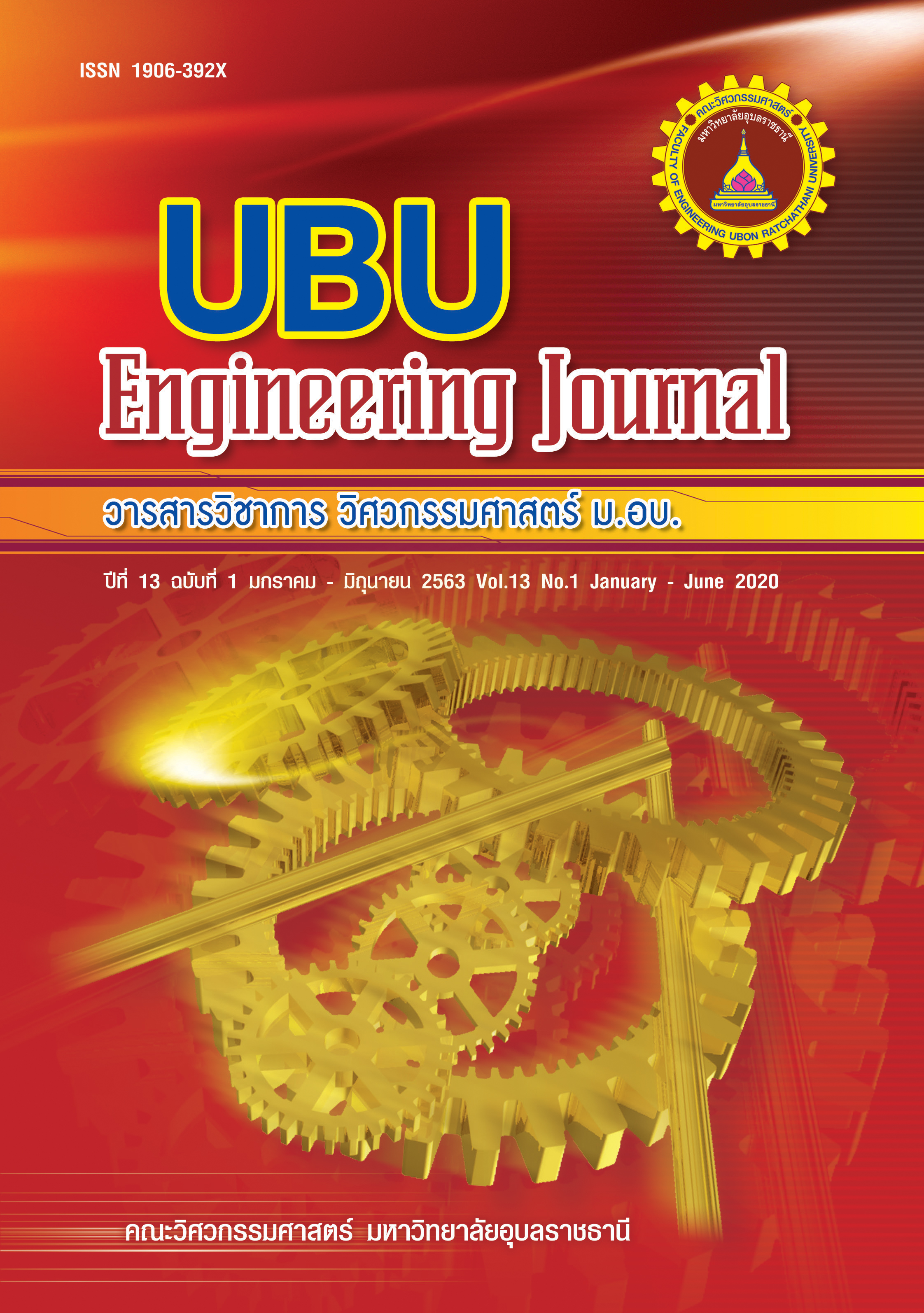Conventional and exergetic life cycle assessments of Quartz Crystal Unit product combined with Organic Rankine Cycle by using refuse derived fuel
Main Article Content
Abstract
This research studies the conventional and exergetic life cycle assessments of a Quartz Crystal Unit production processes of Kyocera Crystal Device (Thailand) Company Limited combined with an Organic Rankine Cycle by using municipal solid waste in the Northern Region Industrial Estate. The environmental impact of 6 indicators and the economic results are analyzed. From the study results, it can be seen that the electrical process from a refuse derived fuel for using in the Quartz Crystal Unit production processes can be reduced the environmental effects. An ecotoxicity at a value of 9.67E+05 kg 1,4 DB-eq is the highest impact, which mostly reduce at approximately 57.43%. The second environmental impact is an ozone depletion as 2.13E+06 kg CFC-11-eq at a reduction ratio of 34.33%. After that, the impacts a terrestrial acidification of 9.56E+06 kg SO2-eq at a reduction ratio of 3.81%, a human toxicity of 1.95E+10 kg 1,4 DB-eq at a reduction ratio of 0.54%, a climate change of 1.36E+10 kg CO2-eq at a reduction ratio of 0.16%, and a freshwater ecotoxicity 9.49E+07 kg 1,4 DB-eq at a reduction ratio of 0.15% are revealed, respectively. Exergetic life cycle assessment shows that a cumulative energy demand of the modified system can be decreased 370,506.67 MJ. The economic results, a levelized electricity cost from the refuse derived fuel is 1.50 Baht/kWh. This electricity cost can decrease a levelized cost of the Quartz Crystal Unit production processes to be 1.44 Baht/piece at a reduction ratio of 2.04%, which is compared with that of the normal processes as 1.47 Baht/piece.

